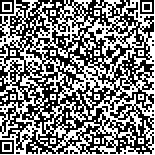下载中心
优秀审稿专家
优秀论文
相关链接
摘要

中国城市黑臭水体情况严重,基于遥感监测黑臭水体刚刚起步,很多问题待解决。以沈阳市城市建成区内主要河流为研究区,于2015年—2016年开展地面调查,获取了浑河和蒲河46个一般水体的样点,和辉山明渠、满堂河、细河以及微山湖路附近、丁香湖北部50个黑臭水体的样点数据,包括水面光谱和主要水质参数。分析了黑臭水体与一般水体的光谱特征,发现城市黑臭水体反射率光谱在绿光—红光波段变化比一般水体平缓,基于这一特点提出了一种基于反射率光谱指数BOI(Black and Odorous water Index)的黑臭水体识别模型,并将其与红绿波段比值指数进行对比,具有更好的识别精度。结果表明:(1)基于遥感反射率(Rrs)计算的BOI小于0.065时,可判为黑臭水体。(2)由于GF2水体图像精确大气校正存在困难,可以利用瑞利散射校正反射率(Rrc)替代Rrs,BOI小于阈值0.05时,可判别为黑臭水体;同时模拟证明,当气溶胶光学厚度逐渐增大时,黑臭水体与一般水体的光谱差异将逐渐减小,因此这种方法主要适用于比较清晰的图像、气溶胶光学厚度比较小(如AOT(550)≤0.5时)。(3)基于Rrc的BOI模型可以较好的应用于GF2图像上,具有较好的识别精度。对2015年—2016年3景GF-2影像提取的结果显示,满堂河和新开河黑臭现象得到逐步改善,辉山明渠黑臭现象依然严峻。本文发展的黑臭水体遥感识别算法主要是基于沈阳黑臭水体的光谱特征,仅在沈阳市进行了验证,将来还需在其他城市进一步验证,并且需要更多地考虑多种因素对水体反射率的影响。
The situation of urban black and odorous water in China is serious, but the monitoring of this water is just starting from remote sensing and many problems need to be solved. The research provides technical support for the effective regulation of urban black and odorous river.
Taking the main rivers in the urban built-up area of Shenyang city as the research object, we carried out ground surveys from 2015—2016 years, and obtained 46 general water samples in Hun river and Pu river, and 50 black and odorous water samples in Huishanming channel, Mantang river, Xi river, the river near the Weishanhu road, and the river of north of Dingxiang Lake, including the water spectrum and water quality parameters. Through the analysis of spectral characteristics of the black-odor water and general water, we found that the urban black and odorous water reflectance spectra in green - red band is gentler than the general water, then we put forward an index of BOI (Black and Odorous water Index) based on the reflectivity spectrum of black and odorous water recognition model. By comparing the BOI index with the ratio index of red and green bands (Wen, et al., 2018), BOI index has better recognition accuracy.
The results show that: (1) When BOI based on the remote sensing reflectance (Rrs) is less than the threshold of 0.065, which can be awarded as black and odorous water. (2) Due to the difficulties of accurate atmospheric correction in GF2 image, Rayleigh scattering correction reflectance (Rrc) can be used to replace Rrs. When BOI is less than 0.05, it can be discriminated as black and odorous water. And the simulation prove that when the aerosol optical thickness increases gradually, the spectral differences of black and odorous water and general water will decrease, so this method is applicable to the clear image with small aerosol optical thickness (such as AOT (550) ≤0.5). (3) BOI based on Rrc can be applied to GF2 image better, and has better recognition accuracy. The results that are extracted from the three images from 2015 to 2016 are showed that the black and odorous phenomenon of Mantang river and Xinkai river have been gradually improved, but Huishanming channel is still serious.
In this paper, the identification algorithm of black and odorous water is mainly based on the spectral characteristics of Shenyang city, it has been validated only in Shenyang, and further verification in other cities. And it is necessary to consider the influence of various factors on the reflectivity of water body in the future.

